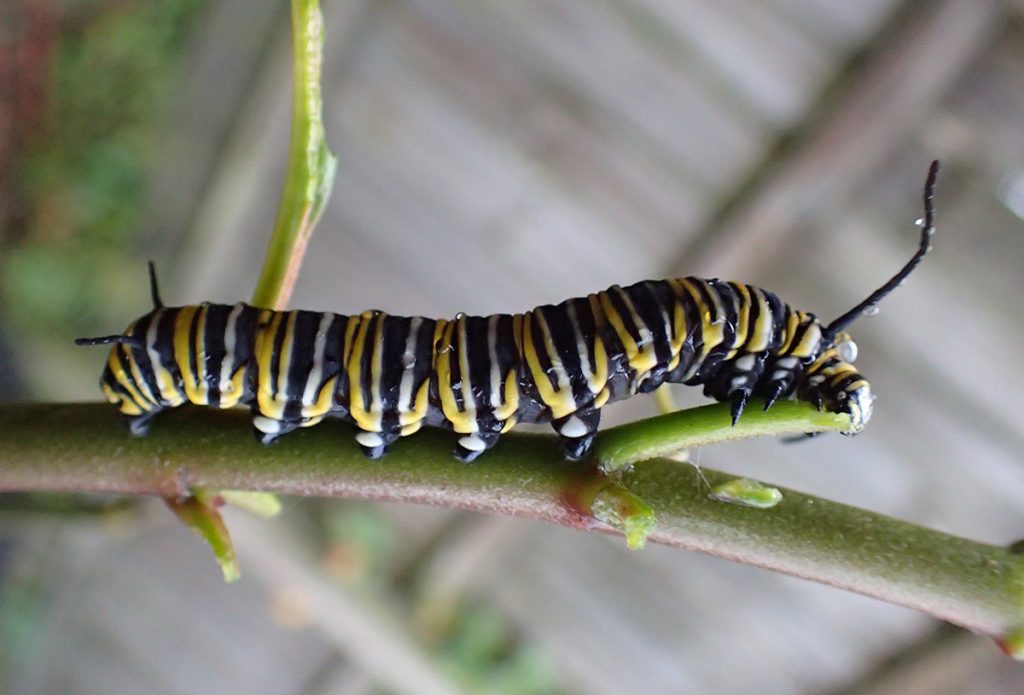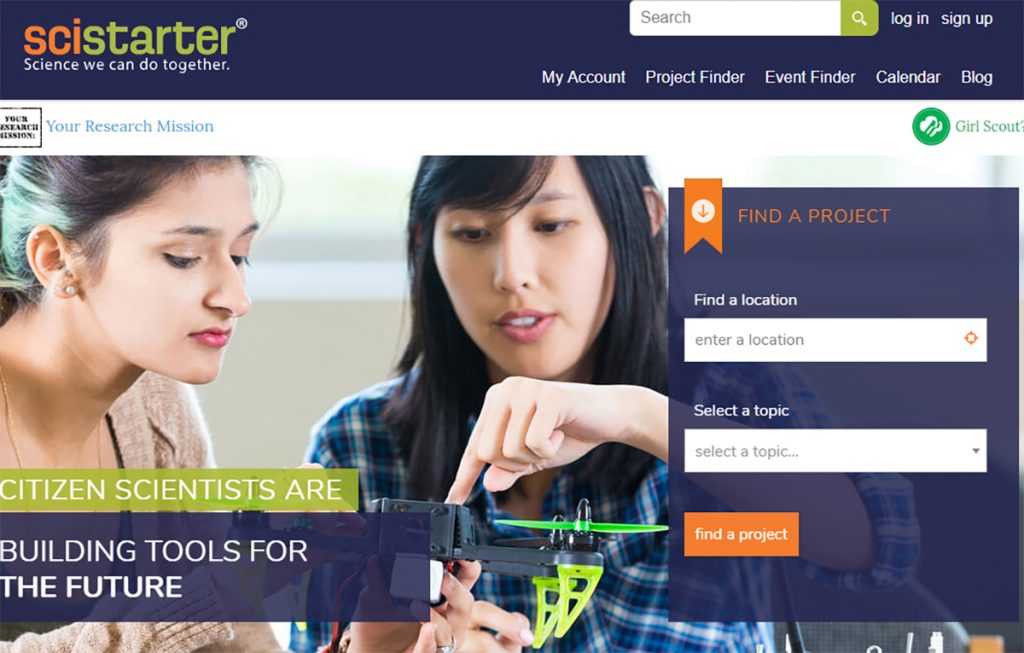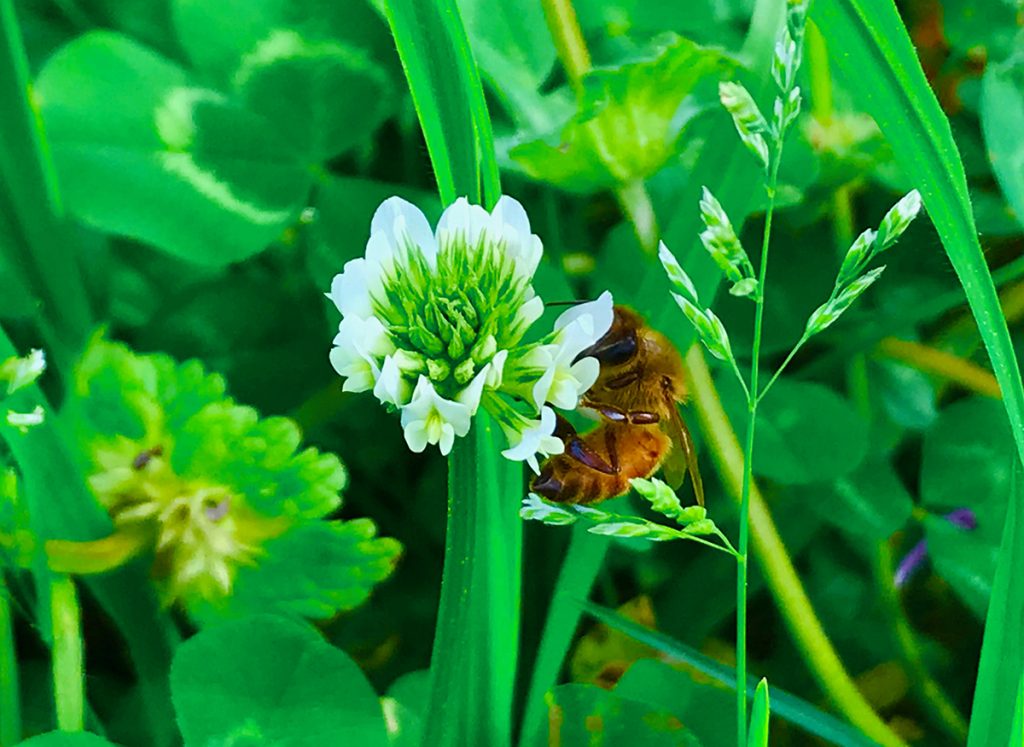Citizen science is a pillar of the EcoCitizen Project, and a great way to connect to nature while aiding researchers. Below is a list of citizen science activities we’ll be writing about and filming on the WFSU Ecology Blog. Below that are a few others that you might enjoy. As you’ll see, there are projects covering a myriad of interests and activity levels. You may want to snap photos of wildlife with your phone, or jump into a wetland in search of salamanders. It’s up to you.

iNaturalist is an app with which you take pictures of any living thing and upload them to an online database. When you’re out in your backyard, the woods, or even in your own house, and you see a weird bug and don’t know what it is, simply open iNaturalist and snap a pic. The app will automatically try and deduce what you have found. Other iNaturalist users will then identify and confirm the species for more certainty. iNaturalist is a great outlet for citizen science because it is engaging and fun, like a biological treasure hunt. Your activity on the app helps career scientists know what’s living in your area. They need all the help they can get from whomever they can, and that includes you. You can download the app for free on your phone and use it to get out there and explore. You’ll never know what you’re going to find.
For a more kid-friendly option, the creators of iNaturalist have developed a sister app called Seek. It functions just the same as iNaturalist with a few important distinctions. For instance, users’ personal and geographic information will not be recorded to the database, and users will receive badges depending on what and how many species they find, a great incentive to get out and explore more often. Seek serves as not only a great introduction to iNaturalist and other citizen science services, but it fosters children’s budding curiosity about the world around them.
Adopt an Ephemeral Wetland Program

Striped newt (Notophthlamus perstriatus), moments after being released into an ephemeral wetland.
The Munson Sandhills region of the Apalachicola National Forest is home to over 200 ephemeral wetlands. These bodies of water appear and disappear depending on seasonal climate cycles. They also serve an important ecological function as breeding grounds for several species of amphibians. For example, due to climate change, urbanization, and other human influences, the population of striped newts (Notophthalmus perstriatus) was at one point almost wiped out from the region. Through their repatriation efforts, the Coastal Plains Institute is battling to rebound the population. CPI founded the Adopt an Ephemeral Wetland Program to raise awareness of the fragile ecology of the region, and involve citizen scientists in the field of amphibian studies. You romp through one of fifty designated wetlands in the Munson Sandhills, catching and documenting a variety of amphibians in all stages of life. You can also attend monthly training events where you will learn about amphibian biology, logging data, and managing equipment and tools. The program invites anyone to participate in this important endeavor.
The Great Sunflower Project
Many of us love growing tomatoes, and we’re always working have our plants yield more and tastier fruit. But we can’t do that without pollinators. Unfortunately, bee and butterfly species are in decline. So it’s crucial that we know exactly what sorts of pollinators are active in our area. This is where The Great Sunflower Project comes in. Its stated mission is to gather information on pollinators, and apply that knowledge for conservation progress. Citizen scientists can use the website to document the frequency and diversity of pollinators that visit certain plants in any area. This goes into an online database. Looking at data collected by individuals across the country, you can see the health of an area’s pollinator population. A session can be as long or as short as you want. It can also be done on a hike, at a park, or your own backyard, and you can observe for as little as ten minutes.
Monarch Larva Monitoring Project

Fifth instar monarch caterpillar on a bare milkweed plant.
One of the great natural wonders we witness in our area is the seasonal migration of monarch butterflies (Danaus plexippus). Their remarkable life story, and the dangers they face, make them a compelling story (one we like to tell on this blog). The Monarch Lab at the University of Minnesota studies the reproductive and migratory cycles of the monarch. Volunteers observe a patch of milkweed plants, look for monarch eggs and larvae, and record their numbers and stages of life. Other factors such as temperature, rainfall, and other creatures on the plants are also entered. Then, they upload their data to the Monarch Larva Monitoring Project’s website. The website will compile your data for the year, and you’ll be able to see how your numbers rise and fall throughout the year. And, you’ll be able to see data from across the country to give you a sense of how monarchs are moving that year.
SciStarter

If you’re interested in exploring a wide variety of other citizen science projects, then SciStarter is the resource for you. Connectivity is the key with SciStarter. It pools together career scientists and citizen scientists and gives them a platform to advertise and share their work. You can search by interest (you like star gazing?) or geographically (how far are you willing to drive?), and find the project or projects that are the best fit. New projects are always being added, and if you need help on a project, it’s not difficult to add it
Additional Citizen Science Projects
The projects above are the ones we’re featuring in the WFSU EcoCitizen Project. But there are so, so many more. Feel free to test them out and write us about your experiences!
Animals
- Help researchers figure put where beetles- both the serious pests and the ecologically friendly ones- are in the United States.
- Promote awareness of and appreciation for urban birds.
- The largest citizen science database of birds.
- Identify potential pest incursions by observing individual species, plant symptoms, and damage.
Plants
- Track seasonal change through the blooming of lilacs.
- Help build a database of plants in Florida over the last 200 years using historic specimens.
The Florida-Friendly Landscaping Plant Guide
- Features over 400 Florida plants, as well as gardening specifications for your region.
Coastal
- IFAS-sponsored list of aquatic and marine ecosystem-based projects.
We’ll keep adding to the list. If you have a Florida based/ appropriate project you’d like us to add, let us know in the comments.

